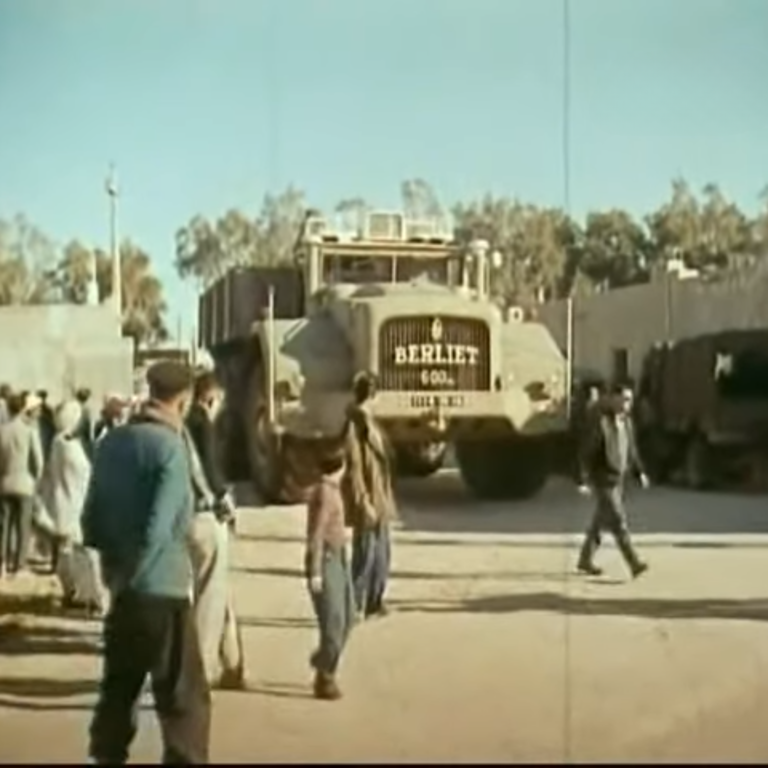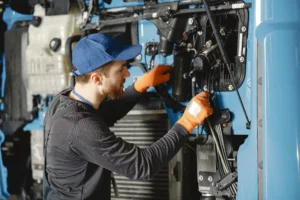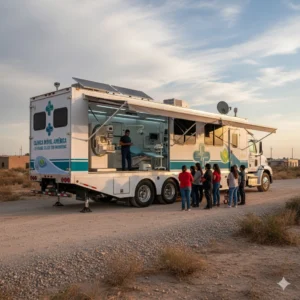With the ability to transport up to 50 tons of cargo through the challenging sand dunes, the T100 stood out in the Sahara's oil exploration.
In the 1950s, France initiated oil exploration in the Sahara Desert, in what is now Algeria. Leading these expeditions, the need arose to create one of the most impressive vehicles of the time: the Berliet T100. With exceptional capabilities to traverse difficult terrains, the Berliet T100, also known as the “desert giant,“ became a symbol of engineering and audacity, standing out as a remarkable technological achievement in oil exploration.
In 1956, Shell invited the renowned truck manufacturer, Paul Berliet, to explore the feasibility of oil extraction in the Sahara Desert. After evaluating the geography and realizing the impracticality of building asphalt roads, Berliet decided to tackle the challenge by creating a specific vehicle. Thus, the development of the Berliet T100 began.
Engineers working on the production, in collaboration with Michelin, designed specially large tires, marking the first step in the creation of this giant. In October 1957, the Berliet T100 came to life. With the ability to transport up to 50 tons of cargo through the challenging sand dunes, the T100 stood out as a unique solution.

Berliet T100, the Desert Giant
This 103-ton vehicle had an imposing presence and dimensions of 15.30 meters in length and almost 4.5 meters in height, earning it the nickname “desert giant.” Additionally, the T100 was equipped with six wheels, each weighing 1,000 kilograms, and a V12 turbo-diesel engine with 29.6 liters and 600 HP from Cummins, providing exceptional power.
The Berliet T100, initially conceived for oil exploration in Algeria, quickly became an icon in vehicular engineering, demonstrating the capacity of innovation to overcome extreme challenges.
Despite its amazing specifications, only four units of this colossal truck were produced. The first unit, tested in Algeria, demonstrated impressive performance by easily reaching 700 HP. This success encouraged Berliet to manufacture the second T100.
The third unit, commissioned by France, was modified with 10 wheels, adapting it for use in a mine. The fourth and final unit had a cabin over the engine and was sent to the United States for promotional purposes and attracting new customers. Unfortunately, this strategy resulted in failure, contrasting with the previous successes of the T100. Despite its short production run, the Berliet T100 is still remembered as an extraordinary achievement in off-road vehicle engineering.

End of the Berliet T100
In 1962, with Algeria gaining independence from France, the era of oil exploration in the country came to an end, marking the twilight of the Berliet T100. Berliet made the decision to cancel the project in the same year, bringing to a close the existence of one of the largest and most powerful trucks to ever roam the earth. This closure symbolized the end of a prominent era in the history of vehicular engineering, leaving the Berliet T100 as a testament to audacity and technical skill in exploring inhospitable terrains.

World Mental Health Day: how to care for truck drivers’ mental health
As part of World Mental Health Day, we focus on caring for the mental health of truck drivers. World Mental Health Day reminds us that

Solving the shortage of diesel technicians
The role of the transport industry in combating the shortage of diesel technicians: what should be done to solve it? In August 2025, the American

Mobile Clinics: The Unsung Heroes Bringing Healthcare to America’s Highways
The drivers of these massive trailers have become the unsung heroes of America’s roads, delivering life-saving medical services to every corner of the country.

Ending CDL reciprocity: the U.S. seeks stricter measures
New bill would require states to comply with the strict CDL regulations recently established. The U.S. House of Representatives has introduced new legislation aimed at

Cargo theft costs the transportation industry $18 million in losses
Cargo theft has been one of the most persistent issues facing the freight transportation industry so far in 2025. Cargo theft has been one of

Duffy Secures $41 Million to Save Essential Air Service as Shutdown Threat Looms
U.S. Transportation Secretary Sean P. Duffy announced on Wednesday that the Department of Transportation (DOT) has secured $41 million in additional emergency funding to sustain the Essential Air Service (EAS) program, a federal initiative that subsidizes commercial flights to rural and underserved communities across the United States.
